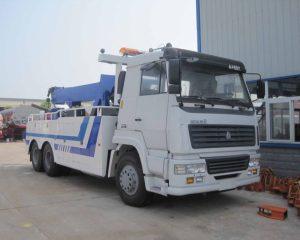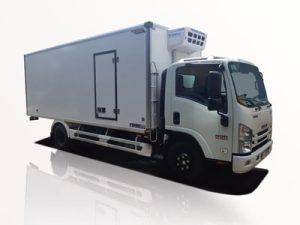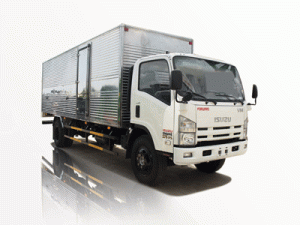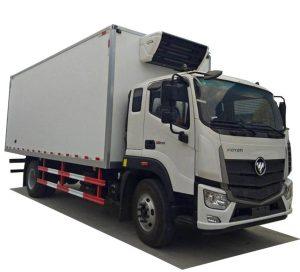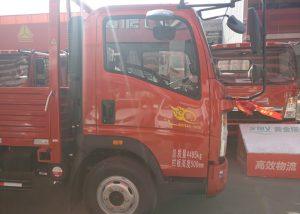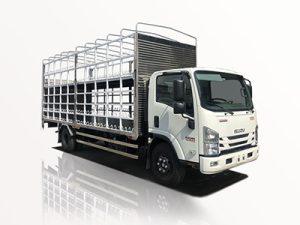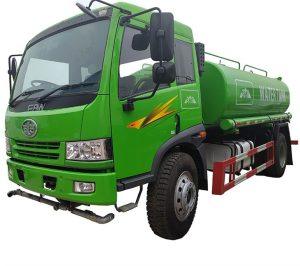Monday to Saturday - 8:00 -17:30
The Difference Between a Crew Cab and a Double Cab: A Comprehensive Guide
Introduction
When it comes to choosing a pickup truck, one of the most important decisions you’ll face involves selecting the right cab configuration. Two popular options are the crew cab and the double cab. While these terms are often used interchangeably, they actually refer to different designs that cater to various needs and preferences. In this comprehensive article, we will explore the key differences between crew cabs and double cabs, helping you make an informed decision for your next vehicle purchase.
Understanding Cab Configurations
1. What is a Cab Configuration?
The cab configuration of a pickup truck refers to the design and layout of the passenger compartment and seating arrangement. Key factors include the number of doors, seating capacity, and interior space. Proper knowledge of these configurations is essential for truck buyers, as they directly impact comfort, convenience, and functionality.
2. Overview of Crew Cabs
A crew cab is designed to provide ample space for both passengers and cargo. It typically features:
- Four full-size doors
- Seating for five to six passengers
- Comfortable rear seating area with legroom
This design is ideal for families or those who frequently transport multiple passengers without sacrificing cargo space.
3. Overview of Double Cabs
A double cab also aims to provide passenger space but generally has slightly different dimensions. Key characteristics include:
- Four doors, but the rear doors are usually smaller and may be more narrow than those on a crew cab
- Seating for four to five passengers
- Less rear legroom compared to crew cabs
The double cab is great for occasional passenger transport while maintaining a longer bed for cargo.
Key Differences Between Crew Cab and Double Cab
1. Size and Space
The foremost difference between a crew cab and a double cab lies in their size and internal space.
1.1 Dimensions
A crew cab typically offers more interior space, which may include:
| Cab Type | Length (inches) | Width (inches) | Height (inches) | Rear Legroom (inches) |
|---|---|---|---|---|
| Crew Cab | 214-240 | 79-82 | 74-79 | 38-45 |
| Double Cab | 205-225 | 79-82 | 74-79 | 33-40 |
As illustrated, crew cabs generally provide more rear legroom, making them a better choice for larger families or group transport.
2. Seating Capacity
While both crew cabs and double cabs can seat up to five passengers, the comfort level varies greatly. Crew cabs typically feature two full-size rear doors that allow easier access to rear seats, making it more comfortable for adult passengers sitting in the back.
3. Cargo Space
Another important factor is cargo space. Crew cabs typically come with shorter bed lengths since the cab itself takes up more space. On the other hand, the double cab often allows for longer beds, making it more suitable for transporting larger cargo.
3.1 Bed Length Comparison
| Cab Type | Typical Bed Length |
|---|---|
| Crew Cab | 5.5 – 6.5 feet |
| Double Cab | 6.5 – 8.0 feet |
Choosing the right option depends on whether passenger seating or cargo space is your priority.
4. Usage Scenarios
Understanding the ideal use case for each cab type can further guide your choice:
4.1 Crew Cab Use Cases
- Family Travel: For those who travel with family frequently.
- Group Transport: Ideal for work teams who need to travel together.
4.2 Double Cab Use Cases
- Work Use: Suitable for contractors requiring more cargo space.
- Occasional Passengers: Good for those who need rear space sometimes but not always.
5. Cost Implications
Pricing can vary between crew and double cabs. Generally, crew cabs tend to be more expensive due to increased passenger space and comfort features. However, it’s essential to consider the long-term value versus immediate cost based on your needs.
6. Popular Models of Crew and Double Cabs
Several automakers offer compelling models in both configurations. Here are a few examples:
6.1 Popular Crew Cab Models
- Ford F-150 Crew Cab
- Chevrolet Silverado 1500 Crew Cab
- Ram 1500 Crew Cab
6.2 Popular Double Cab Models
- Toyota Tundra Double Cab
- Nissan Titan Double Cab
- GMC Sierra Double Cab
Practical Tips for Choosing the Right Cab Configuration
1. Evaluate Your Needs
Consider the number of passengers you regularly transport and the amount of cargo you need to carry. If you transport family and friends frequently, a crew cab may be more suitable. For occasional use with larger loads, a double cab will suffice.
2. Check the Vehicle’s Specifications
Always check the specifications and features of the specific models you are considering. Different manufacturers may have varying dimensions and configurations, so a hands-on examination is worthwhile.
3. Consider Future Use
If you anticipate changes in your lifestyle—such as starting a family—opting for a crew cab might be the smarter choice.
4. Test Drive Both Configurations
Finally, get behind the wheel of both types. Feeling the space and comfort level will help you make an informed decision.
Frequently Asked Questions (FAQ)
1. Is a crew cab bigger than a double cab?
Generally, yes. A crew cab typically provides more interior space and legroom for rear passengers compared to a double cab.
2. Can you fit three people comfortably in the back of a double cab?
While it’s possible to fit three people in the back of a double cab, it might not be as comfortable as in a crew cab due to less legroom and narrower seats.
3. Which configuration is better for families?
A crew cab is often the better choice for families due to the added space and comfort it provides for rear-seat passengers.
4. Are crew cabs more expensive than double cabs?
In most cases, yes. Crew cabs tend to have a higher price point due to the increased passenger space and comfort features.
5. Are there any downsides to choosing a crew cab?
The main downside is the shorter bed length, which might limit cargo capacity compared to double cabs, which often feature longer beds.
6. Can I use a double cab for off-road adventures?
Yes, double cabs can be used for off-road adventures, but it’s best to check the specific model’s off-road capabilities and ground clearance.


